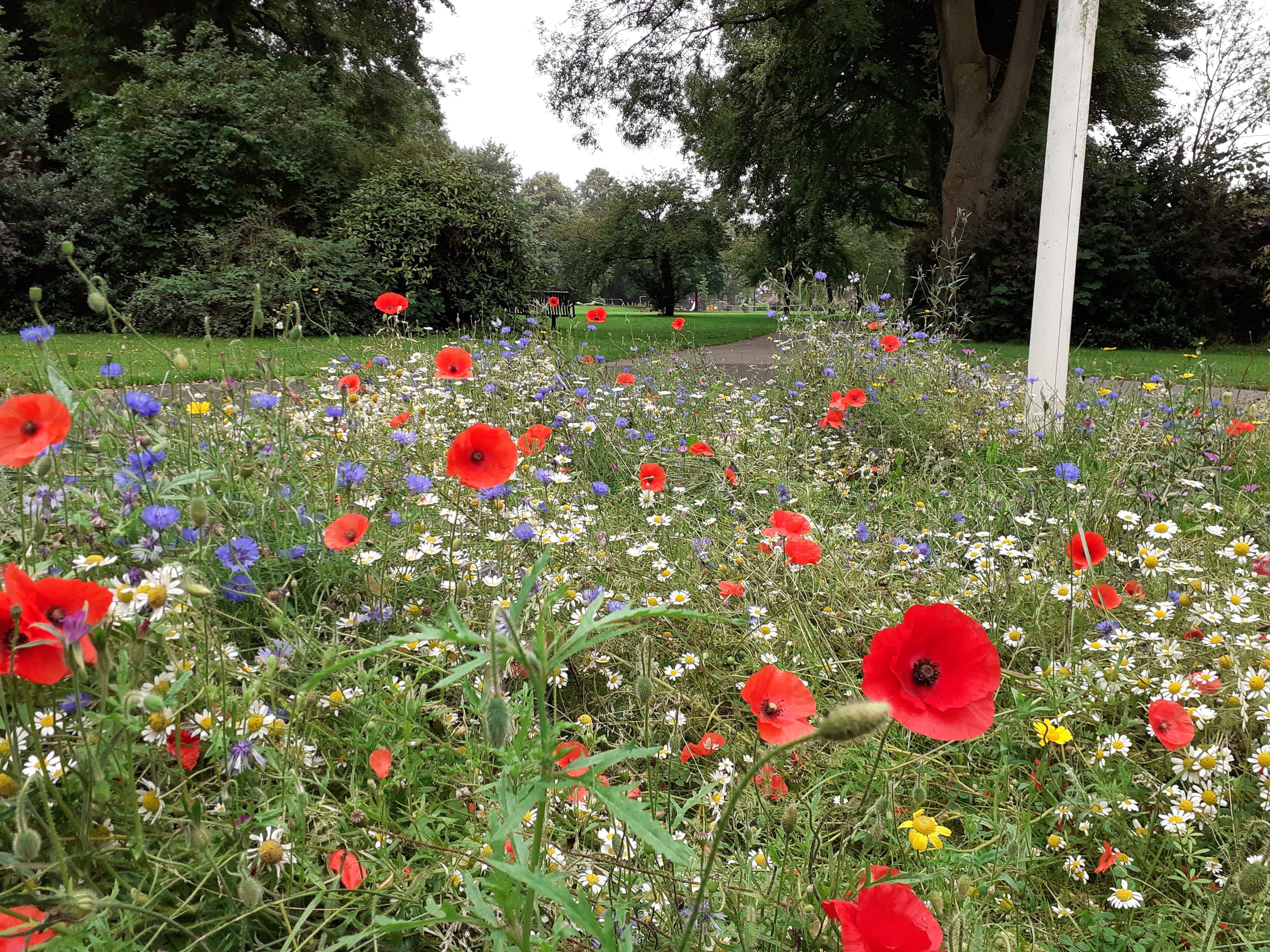
One Trafford has introduced better habitats for insects and pollinators by creating wildlife corridors in a number of existing green spaces.
The One Trafford Partnership, a collaboration between Trafford Council and Amey, has been striving towards creating a nature rich environment to encourage more wildlife across the borough.
Whilst working closely with In Bloom groups, Friends of Parks groups and The Conservation Volunteers on the continuing Wilding Trafford project; the borough has seen thousands of new bulbs, wildflower seeds and hundreds of shrubs planted in the last three years. In the last three years, over £100,000 has been invested into the habitat improvement through the green space capital programme.
These corridors consist of wildflower meadows and beds in seven parks in Trafford; Hullard Park, Seymour Park, Longford Park, Turn Moss Park, Lostock Park, Moss Park and Gorse Hill Park. The green spaces within these parks and some highway verges were identified as ideal locations to begin growing strengthened habitats for wildlife.
With a reduced grass cutting regime the wildflower meadows within these parks will now only be mown once a year; giving the wildflower meadows a chance to flourish and attract pollinators in the summer months. These parks provide stepping-stones of habitats from the River Mersey Valley towards the centre of Manchester and north of the borough, all the way south to the Cheshire plain.
One Trafford is moving away from seasonal planting to instead installing perennial plants, which support a longer lasting season of nectar sources for bees. Thousands of perennial bulbs such as native daffodils, crocus and snowdrops have been planted at John Leigh Park, Victoria Park, Walton Park and Worthington Park.
As part of ongoing public education, One Trafford has also installed information boards in a number of parks with details of plants, shrubs, meadows and even some orchards.
Taking an additional step to benefit the bee population, the partnership has now stopped the use of Glyphosate herbicide in all parks. Instead weeds will be managed by cutting and pulling out weeds, with the support of Friends groups where possible.
Councillor Stephen Adshead, Executive Member for Environment, Air Quality and Climate Change, said:
“Over the last few years the Wilding Trafford project has been flourishing in the borough. Not only has the project helped to establish a better network of essential habitats and feeding areas for pollinators, it’s also given us a better understanding of how we can support the wildlife population.
In addition to Wilding Trafford, we’ve also been planting more and more trees throughout the borough as part of the Urban Tree Challenge. Funding, which was secured earlier in the year through City of Trees, means we’re able to plant hundreds of new trees to create better green spaces and to improve air quality.
Councillor Liz Patel, Executive Member for Culture and Leisure, said:
“Trafford has so many diverse parks and green spaces, 11 of which were awarded Green Flag status in 2019. We’re continuing to work closely with groups and experts to create even better spaces for everyone to enjoy and learn from. Turn Moss Park, Longford Park and Hullard Park are now home to beekeeping groups which is providing further education to park users.
With reduced grass mowing, some areas of the park may look little a wilder. It’s important to remember that we’re now changing the way in which we maintain these green spaces. This is how we can support the insect and pollinator population in Trafford and create spaces that we can explore and learn from.”
To find your local Trafford park visit www.trafford.gov.uk/parks. For green space updates, search #TraffordParks on Twitter.
Posted on Wednesday 7th October 2020